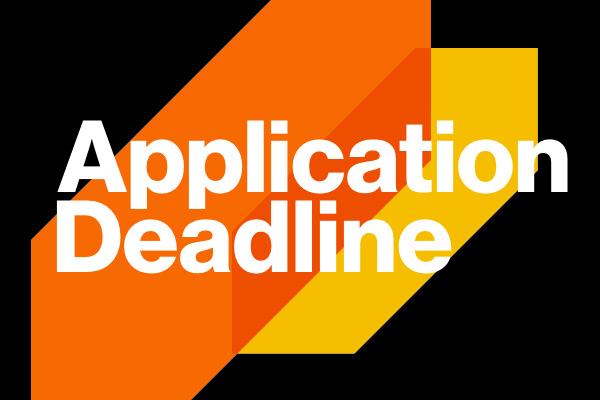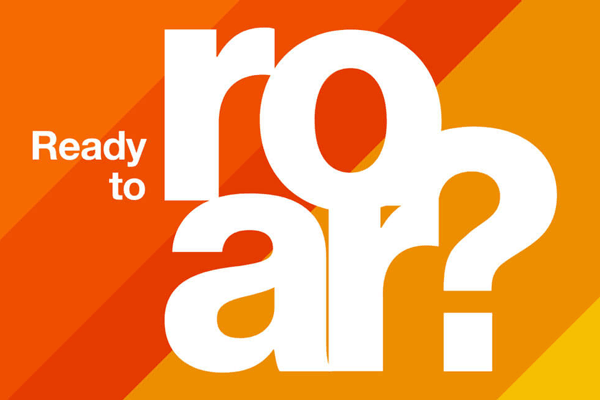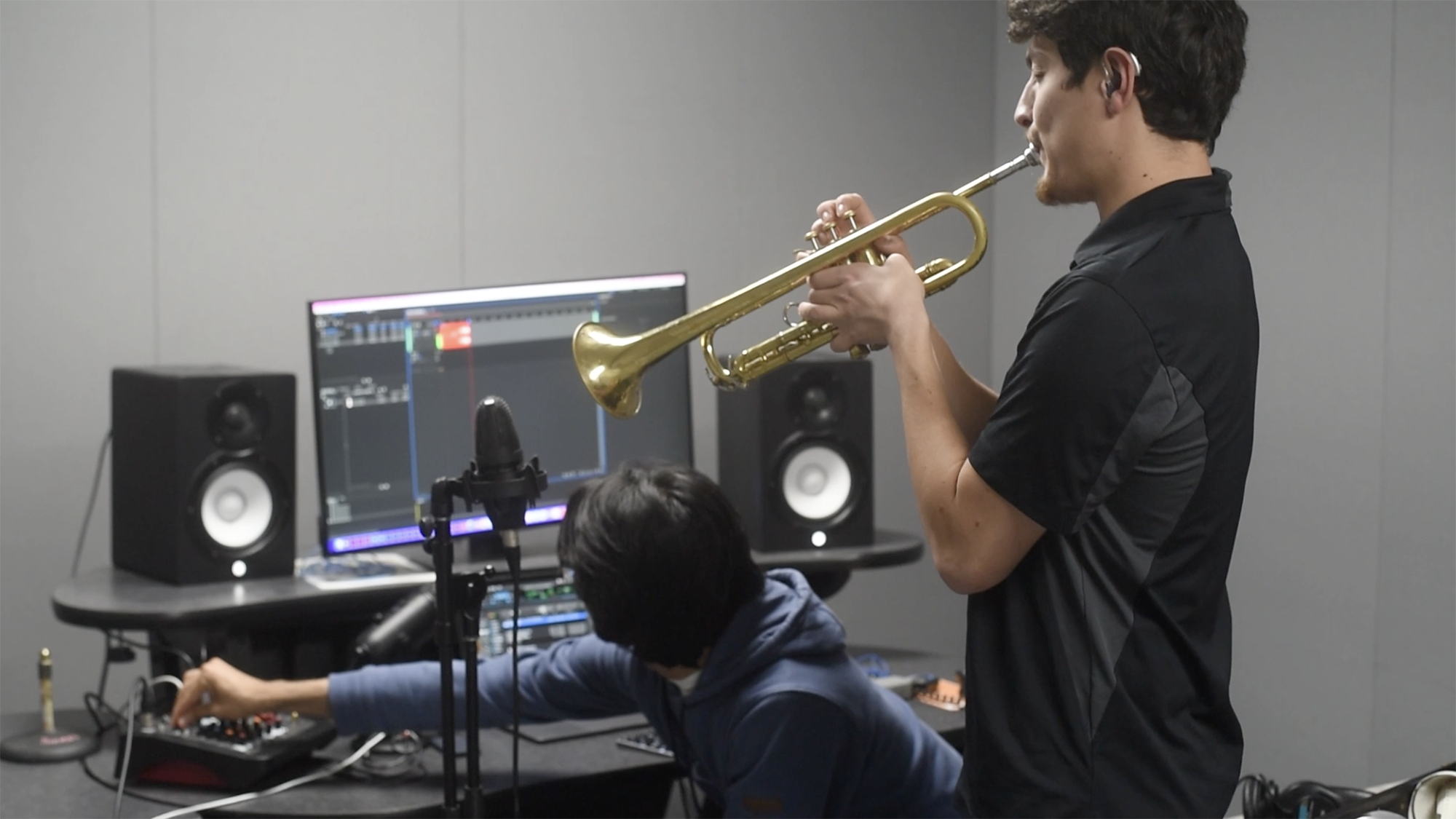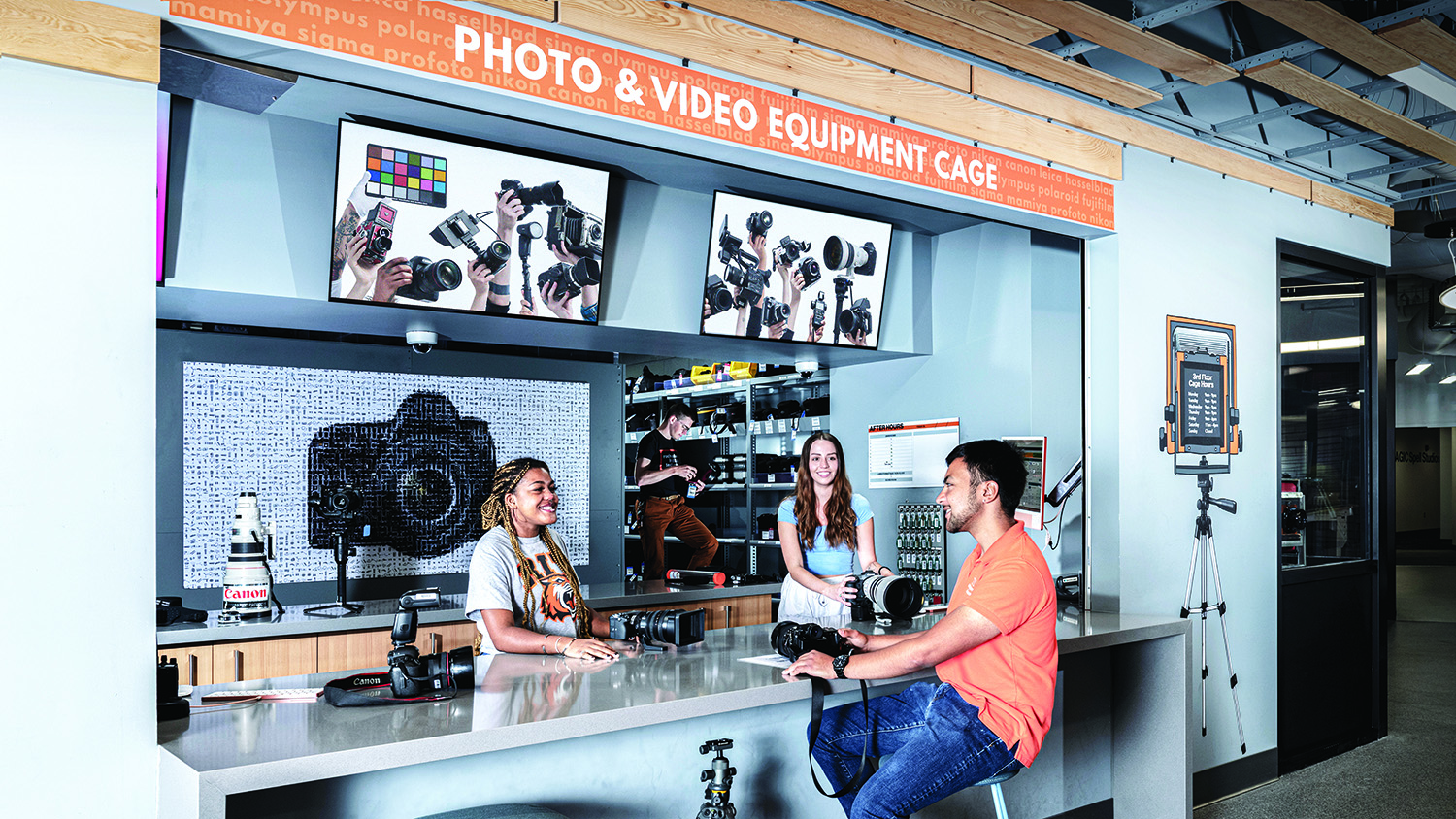Photojournalism Option - Photographic and Imaging Arts BFA
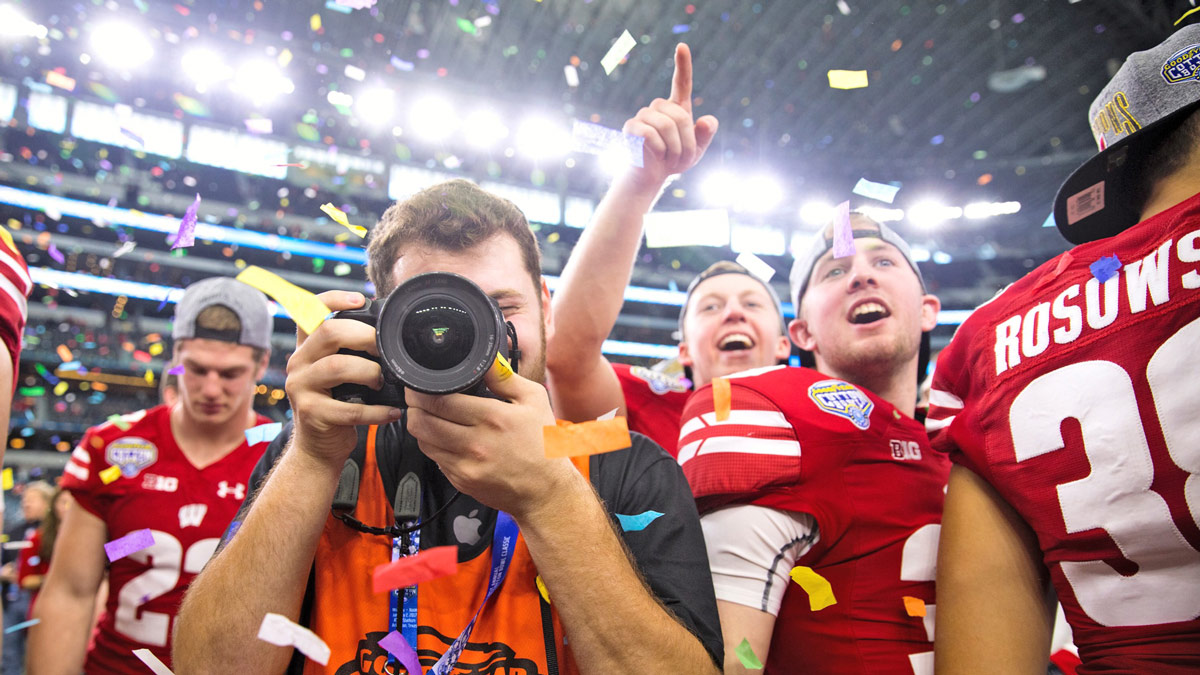
Photojournalism Option
Photographic and Imaging Arts BFA
- RIT /
- College of Art and Design /
- Academics /
- Photojournalism Option - Photographic and Imaging Arts BFA
RIT's photojournalism degree prepares you to produce non-fiction visual reporting that tells the stories of people, social issues, and events for modern media outlets.
Overview for Photojournalism Option - Photographic and Imaging Arts BFA
Why Study Photojournalism at RIT
Industry Exposure: The School of Photographic Arts and Sciences brings various visiting professionals, events, and talks.
Gain Real-World Experience: Gain hands-on experience in the classroom and through paid work opportunities like internships and co-op.
The photojournalism degree teaches students to create and publish still photographic reporting and moving and interactive media that document our diverse culture, evoking both the every day and momentous circumstances of contemporary life and society. This option is part of the Photographic and Imaging Arts BFA program.
RIT’s Bachelor's Degree in Photojournalism
The photojournalism option allows flexibility and individual specialization where students can focus on their primary interest. Students take required courses in:
- Photojournalism fundamentals
- Picture editing
- Multimedia, including sound, video gathering, and video editing
Students then may choose to take extra courses in an area in which they want further specialization, including:
- Picture editing
- Still photojournalism fieldwork
- Multimedia storytelling
Students contribute to the creation of special publications centered on community activity and awareness, and provide staff support to RIT’s student-run magazine, The Reporter. Students also have the opportunity to travel to Washington, D.C., and New York to meet with potential employers that represent the wide spectrum where photojournalists currently work.
National Press Photographers Association
Photojournalism students are the driving force in the school's National Press Photographers Associate (NPPA) student chapter. Students regularly attend activities sponsored by the NPPA, including regional and national conferences. The chapter manages a yearly contest of student work that is judged by alumni who also share their experiences in photojournalism and review student portfolios. The chapters also hosts guest speakers. The RIT student chapter was awarded the nation’s top chapter by the NPPA in 2016.
-
First-Year Applications Due Soon
Apply by Jan. 1 for Early Decision II and by Jan. 15 for Regular Decision.
-
Join Us for Accepted Student Open House
Visit campus on March 28 or April 11 to meet faculty, tour campus, and ask your questions.
Careers and Experiential Learning
Typical Job Titles
| Director of Photography | Multimedia Editor | Multimedia Journalist |
| Multimedia Producer | Photojournalist | Picture Editor |
| Picture Researcher | Visual Archivist |
Cooperative Education and Internships
What’s different about an RIT education? It’s the career experience you gain by completing cooperative education and internships with top companies in every single industry. You’ll earn more than a degree. You’ll gain real-world career experience that sets you apart.
Co-ops and internships take your knowledge and turn it into know-how. Co-op in the College of Art and Design provides hands-on experience that enables you to apply your artistic capabilities in dynamic professional settings while you make valuable connections between classwork and real-world applications.
Photojournalism Internships: Students apply for internships as photographers, videographers, editors, and producers with some of the nation’s most respected digital and print publications, as well as other types of organizations. Visual storytelling is central in a rapidly evolving world and the types of positions for which our students apply continues to expand dramatically. In these positions, students work collaboratively and have the opportunity to learn from leading industry professionals. Students receive assistance from their professors, as well as from the Office of Career Services and Cooperative Education, in identifying and applying for internships. Internships provide real-world work experience, which is an invaluable part of students’ educational experience.
Career Opportunities in Photojournalism
Photojournalism graduates go on to work for some of today’s leading digital and print publications, as well in other types of organizations that capitalize on our students' visual storytelling skills. Our graduates are regularly recognized for their outstanding work. Eleven alumni have won a combined 15 Pulitzer Prizes for their work in visual journalism. View the work of our Pulitzer Prize-winning alumni.
In addition to photographers and videographers, many graduates are employed as picture editors, website producers, content curators, archivists, social media producers, and filmmakers. A significant number of graduates also become self-employed freelance photographers, videographers, and editors who work with news and editorial organizations, picture agencies, production companies, non-profits, government agencies, and other types of organizations.
Creative Industry Days
Connect with Design Industry Leaders
RIT’s Office of Career Services and Cooperative Education hosts Creative Industry Days, which connects students majoring in art, design, film and animation, photography, and select computing majors with companies, organizations, creative agencies, design firms, and more. Creative Industry Days are a series of events that allow you to network with company representatives and interview directly for open co-op and full-time employment positions.
Featured Work and Profiles
-
Multimedia Storytelling
As a photojournalist for a major daily newspaper, David Wallace ’01 Photojournalism Option (Photographic and Imaging Arts BFA) has produced compelling stories honored with prestigious awards.
Read More about Multimedia Storytelling -
RIT Pulitzer Prize Legacy: David Carson '94
David Carson '94 was part of the photography staff of the St. Louis Post-Dispatch honored with a Pulitzer Prize for its coverage following the police shooting of Michael Brown, an unarmed black...
Read More about RIT Pulitzer Prize Legacy: David Carson '94 -
Melding human connection with visual storytelling
Vincent Alban ’23 (photojournalism), the 2022 and 2023 College Photographer of the Year, views journalism as an opportunity to be a power for good in the world. By melding human connection with visual...
Read More about Melding human connection with visual storytelling -
Pulitzer Prize Legacy
William Snyder RIT photojournalism alumni have a strong legacy of journalistic excellence, highlighted by the many Pulitzer Prizes they have been recognized with.
Read More about Pulitzer Prize Legacy -
'Absence and Presence'
Vincent Alban's capstone project about gun violence issues won a host of student and professional competitions.
Read More about 'Absence and Presence' -
Photographing Bills Mafia
Clay Patrick McBride RIT faculty and students captured the unique pre-game traditions and unbridled passion of Buffalo Bills fans for a story and picture essay featured in Sports Illustrated.
Read More about Photographing Bills Mafia
Admissions and Financial Aid
This option is part of the Photographic and Imaging Arts BFA. Please visit the degree program page for admission requirements.
Financial Aid and Scholarships
100% of all incoming first-year and transfer students receive aid.
RIT’s personalized and comprehensive financial aid program includes scholarships, grants, loans, and campus employment programs. When all these are put to work, your actual cost may be much lower than the published estimated cost of attendance.
Learn more about financial aid and scholarships
Related News
-
December 15, 2025

Faculty duo highlights global health equity with documentary series
Associate Professors Josh Meltzer and Jenn Poggi worked with Special Olympics and the Golisano Foundation to produced videos celebrating health leaders dedicated to improving the health and well-being of people with intellectual and developmental disabilities.
-
October 22, 2025
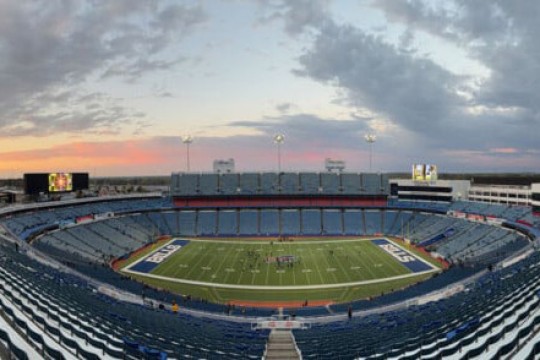
How 6,500 People Lit an Incredible 360° Nighttime Panorama of an NFL Stadium
PetaPixel speaks to Eric Kunsman, assistant professor in the Department of Visual Communications Studies, about the logistics of planning an event like Big Shot.
-
October 13, 2025
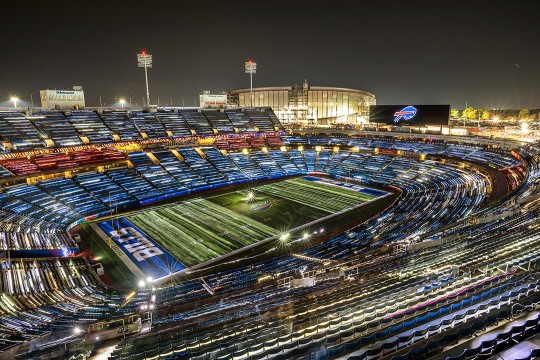
RIT Big Shot team blitzes Highmark Stadium
RIT commemorated the Buffalo Bills’ final season at Highmark Stadium on Oct. 11 with nighttime photos, including a 360-degree panoramic image that will be displayed in the new stadium when it opens next year.
Contact
- Jenn Poggi
- Associate Professor, Photo Arts and Sciences
- School of Photographic Arts and Sciences
- College of Art and Design
- jappph@rit.edu
School of Photographic Arts and Sciences




